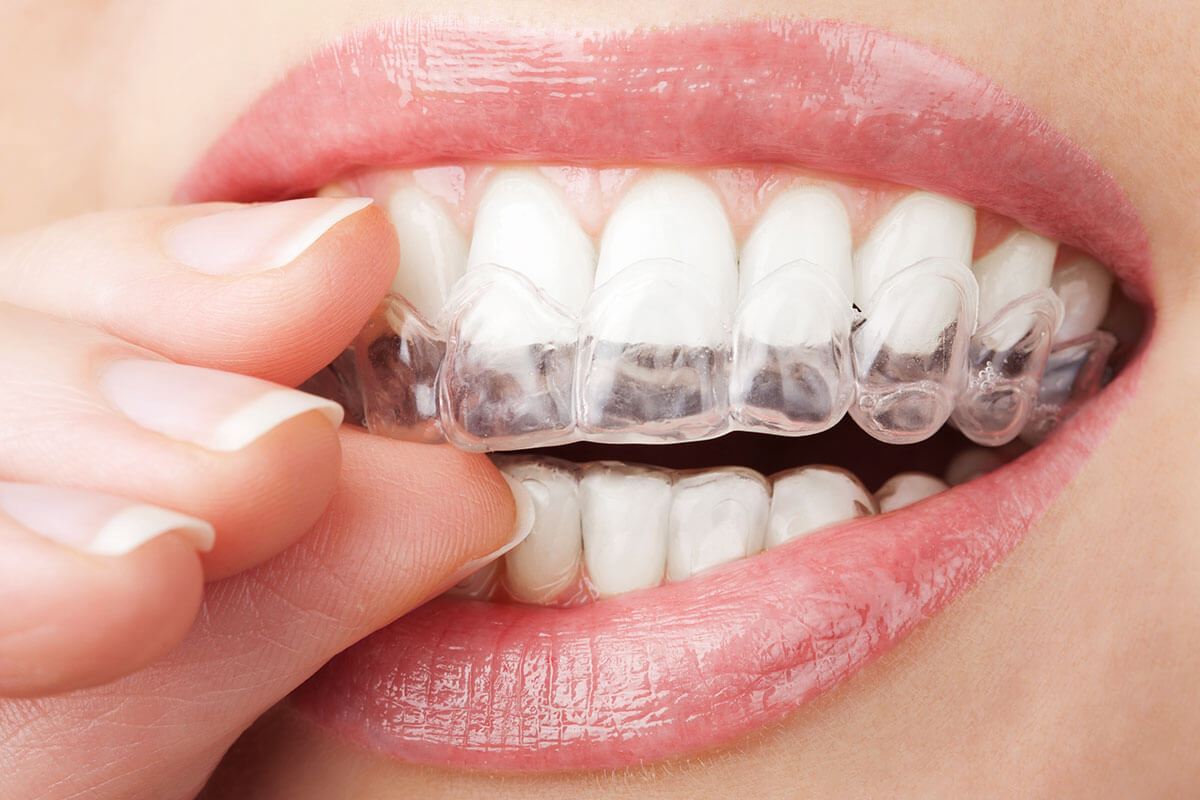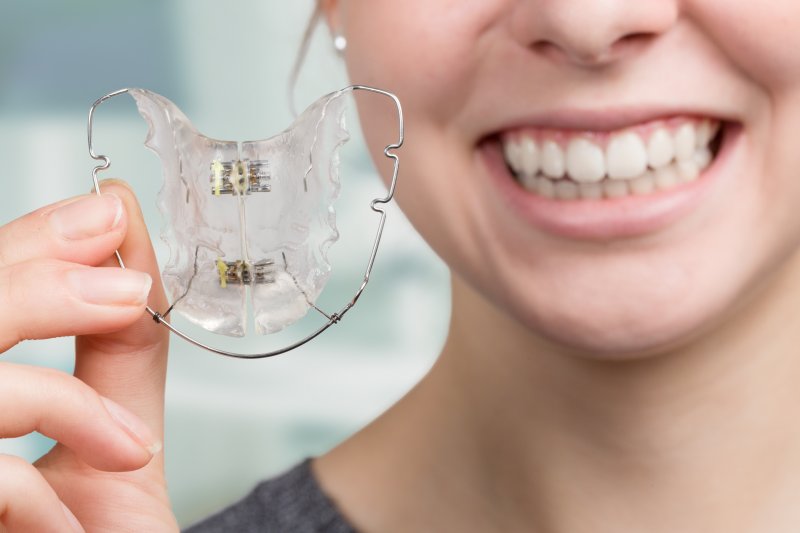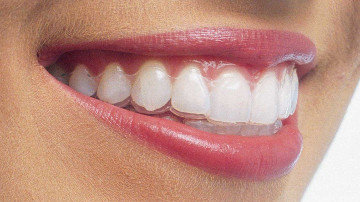Leading Factors to Select Invisalign Over Other Orthodontic Treatments
Leading Factors to Select Invisalign Over Other Orthodontic Treatments
Blog Article
Invisalign vs. Conventional Dental braces: Which Alternative Is Right for You?
When taking into consideration orthodontic therapy, the option between Invisalign and conventional dental braces presents a number of important elements that merit mindful analysis. Invisalign offers a discreet alternative with detachable aligners, while typical braces offer a more visible yet reliable remedy for serious misalignment.
Introduction of Treatment Options

In contrast, traditional dental braces include steel braces and wires that are bound to the teeth. This method applies continual pressure with time to achieve positioning. While effective for complicated orthodontic concerns, conventional dental braces call for regular gos to for changes and can pose challenges in keeping dental hygiene due to the problem of cleansing about brackets and wires.
Both alternatives have their advantages, and the selection usually rests on certain oral conditions, lifestyle choices, and person conformity. Ultimately, seeking advice from an orthodontic specialist is critical for figuring out the most suitable therapy strategy customized to private requirements. Comprehending the subtleties of each choice can dramatically affect the total success of orthodontic treatment.
Aesthetic Factors To Consider
A significant variable affecting the choice between Invisalign and typical dental braces is the aesthetic allure each therapy provides. Invisalign aligners are crafted from clear plastic, making them essentially undetectable when used.
In contrast, traditional dental braces consist of steel braces and cords, which can be extra obvious. While improvements in orthodontic technology have actually resulted in the development of smaller sized braces and colored elastics, traditional braces still preserve an even more noticeable account. For some individuals, the presence of braces might deter them from looking for necessary treatment.
Inevitably, the option in between Invisalign and conventional dental braces may depend upon personal preferences regarding visual appeals. People who prioritize discernment frequently favor Invisalign, while those who are less worried concerning exposure might go with typical braces. Comprehending the visual implications of each choice is essential for making an educated decision that straightens with one's way of life and preferences.
Convenience and Convenience

In regards to comfort, Invisalign aligners are detachable, allowing people to enjoy their preferred foods without constraint and keep optimal oral health. Cleaning and hop over to here flossing are streamlined, as the aligners can be gotten during these regimens, whereas typical dental braces need careful steering around brackets and wires.
Furthermore, Invisalign's modern system enables for fewer orthodontic gos to. Patients usually get multiple collections of aligners at the same time, which can simplify the treatment process and lower time spent in the orthodontist's chair. In comparison, standard braces require normal modifications, making them less practical for those with busy routines. Invisalign. Overall, the convenience and benefit of Invisalign make it an enticing choice for several individuals looking for orthodontic treatment.
Therapy Duration and Performance
While both Invisalign and standard dental braces are effective in fixing oral imbalances, the duration of therapy can differ dramatically between the 2 alternatives. Typically, Invisalign treatment can take anywhere from 12 to 18 months, depending upon the intricacy of the instance. The clear aligners function by gradually moving teeth right into their wanted placements, and regular follow-ups with an orthodontist assistance make certain progress continues to be on the right track.
In comparison, typical braces commonly call for a longer commitment, typically ranging from 18 months to three years. This is because of their set nature and the usage of cables and brackets, which can be extra effective for intricate cases and severe misalignments (Invisalign). The treatment effectiveness of standard dental braces is well-documented, as they permit specific adjustments and better control over tooth motion
Eventually, the choice in between Invisalign and conventional braces may depend upon both the anticipated therapy duration and the details oral problems at hand. Consulting with an orthodontist is vital, as they can supply tailored recommendations based on specific demands, making certain the selected technique lines up with desired outcomes and durations.
Cost Contrast and Insurance Policy Alternatives
Expense plays a significant duty in the decision-making procedure for individuals thinking about orthodontic therapy, whether choosing Invisalign or typical braces. Typically, the cost of Invisalign ranges from $3,000 to $8,000, while typical dental braces typically cost between $2,000 and $6,000. Factors affecting these costs consist of the complexity of the instance, the duration of therapy, and geographical area.
Several dental insurance coverage strategies provide partial protection for orthodontic therapies, but the specifics can vary commonly. Normally, typical braces may be extra regularly covered by insurance coverage strategies contrasted to Invisalign, which some insurers classify as a cosmetic treatment.
Furthermore, numerous orthodontic methods supply flexible repayment strategies, making both treatment options a lot more available. Patients must make inquiries regarding potential financing options and discounts for upfront repayments. Assessing the overall cost, including insurance coverage advantages and layaway plan, is crucial for making an informed decision that straightens with both visual choices and budget plan factors to consider.

Final Thought
In recap, the selection in between Invisalign and typical dental braces rests on multiple elements, including visual choices, convenience, treatment duration, and cost. Invisalign offers a very discreet, detachable choice that promotes dental health and nutritional versatility, while standard braces may be better for intricate dental issues and frequently come with a lower price factor. Inevitably, appointment with an orthodontist is necessary to examine private circumstances and determine one of the most ideal therapy choice for attaining ideal dental placement.
When thinking about orthodontic treatment, the selection in between Invisalign and typical braces presents a number article of essential elements that merit link mindful examination.Comparing Invisalign and traditional braces reveals unique therapy options for orthodontic correction.While both Invisalign and standard braces are reliable in remedying oral misalignments, the period of treatment can differ considerably in between the two alternatives.Expense plays a significant function in the decision-making procedure for individuals thinking about orthodontic therapy, whether choosing for Invisalign or typical braces.In summary, the selection in between Invisalign and traditional braces pivots on multiple elements, consisting of visual preferences, convenience, therapy period, and expense.
Report this page